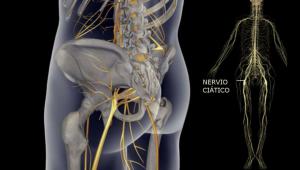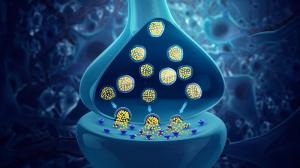Neural tube: what it is, how it is formed, and associated diseases
The complexity of our nervous system, a fundamental system that connects and governs all the processes of our body, is something that continues to amaze every day the many researchers and experts who they study. But one fact must be taken into account, and that is that although when we think of a nervous system a structure generally comes to mind already mature, it is necessary for a series of processes to take place from when we are little more than a cluster of cells to reach a nervous system ripe.
Throughout embryonic and fetal development they will produce a series of events that will trigger the formation of the so-called neural tube, which in turn will develop during pregnancy until generating the structures of the human nervous system
- You may be interested in: "Parts of the human brain (and functions)"
What is the neural tube?
is known as the neural tube the structure that forms during gestation and is the immediate predecessor of the nervous system, being its closure and evolution the one that will end up generating the different structures that are part of it. Specifically, we are talking about the brain and the
spinal cord, being others such as those of the peripheral nervous system formed by the neural crests.Technically, the process in which the neural tube is generated and closed would start from the third week of gestation and should finish closing around the 20th week. eighth day. It must be taken into account that it is essential that the tube closes in order for the spine and skull can protect the nerves and the brain and so that these can form. This closure usually occurs correctly in most births, although sometimes the tube fails to close, which can lead to different neural tube defects.
Neurulation: formation and evolution of the neural tube
neural tube occurs through a process known as neurulation, in which the notochord and the whole mesoderm lead the ectoderm to differentiate into neuroectoderm. This thickens and ends up detaching from the cell sheet, forming the neural plate.
This plate will proceed to stretch in a rostrocaudal manner, in such a way that it will generate folds, which will grow with the development of the fetus. Over time the central part collapses, generating a channel whose walls will gradually close in on themselves until generating a tube-shaped structure: the neural tube. Said tube begins to close on itself in the middle part, advancing towards the ends. In this process the neural crests are also separated and detached from the tube, which will end up generating the autonomic nervous system and different organs and tissues of the different body systems
Initially the tube will be open at its ends, forming the rostral and caudal neuropores, but after the fourth week they begin to close. Said closure and the development of the tube will generate various dilations in its rostro-cranial part, which in the future configures the different parts of the brain. The rostral end usually closes first, around day 25, while the causal end usually closes around day 27.
There is a second process of neurulation, the so-called secondary, in which the part of the neural tube corresponding to the vertebral column is formed and at the same time hollowed out in such a way that the internal cavity is emptied of said tube, generating a separation between epithelium and mesenchymal cells (which will form the medullary cord). In the medulla we find that motor neurons appear in the ventral part, while sensory neurons appear in the most dorsal part of it.
Formation of the different brain regions
Throughout the formation and development of the neural tube, the structures that are part of our adult nervous system will be produced. The cells of the neural tube, once closed, begin to divide and generate different layers and structures. The brain will appear in the anterior or rostro-cranial part of the tube.
During the fourth week of gestation, the forebrain, midbrain, and rhombencephalon can be seen.. During the fifth, the first and third divide, forming the first telencephalon and diencephalon, and the second metencephalon and myelencephalon. In a relatively fast way, the structure is changing in a heterogeneous way, growing the different structures (being the telencephalon, the proper part of the cortex, the one that is most develops).
It must be taken into account that not only the wall of the neural tube is important, but also the holes and empty spaces present inside it: they will end up forming the ventricles and the set of structures through which the cerebrospinal fluid will circulate, without which the brain could not function correctly.
neurulation defects
The neurulation process, in which the structure of the nervous system is formed, is something fundamental for the human being. However, in it sometimes alterations and malformations can occur that can have more or less severe consequences on the development and survival of the fetus. Among them, some of the best known are the following.
1. spina bifida
One of the most common neural tube defects and acquaintances is the spina bifida. This alteration supposes the existence of some type of problem that prevents a part of the neural tube from not closing completely. completely, something that can have effects of variable severity as the nerves and spinal cord cannot be properly protected by the spine.
Within this type of alterations we can find subjects whose alteration is not visible (hidden), although may have holes or bumps on the back, and others that have a directly perceptible hole (cystic or open). The closer it is to the brain, the more serious possible nerve injuries can be.
2. Anencephaly
Another of the best-known alterations and defects of the neural tube is anencephaly. In this case, we see that the caudal part of the neural tube has not closed completely. This alteration is usually incompatible with life, and it is not strange that abortions occur or having a very short life expectancy after being born. However, in some cases survival is longer. Anencephalic subjects cannot perform complex cognitive and sensory functions, not having awareness of the environment or of themselves and in most cases not being able to perceive (although they may have reflexes).
3. encephalocele
Alteration produced by problems during the closure of the rostral end of the neural tube. Equivalent to spina bifida but in the skull, supposes the existence of a protrusion of part of the contents of the brain towards the outside of the skull, generally presenting a kind of sac or bulge on the head with said content. In most cases, cognitive alterations are generated, and the death of the child during fetal development is not uncommon.
- Related article: "Encephalocele: types, causes, symptoms and treatment"
4. Chiari malformation
It is common for the presence of alterations in the development and closure of the neural tube to generate the so-called Chiari malformations, which consist of a protrusion of part of the cerebellum or part of the brain into the spinal canal, being displaced by some type of structural malformation of the skull or brain brain. In other words, part of the content of the brain invades and occupies the spinal canal. It may not cause symptoms, but it can also cause pain, problems with balance, vision and coordination, and paresthesias.
Bibliographic references
- Lopez, N. (2012) Developmental biology. Workbook, McGraw-Hill Education.


